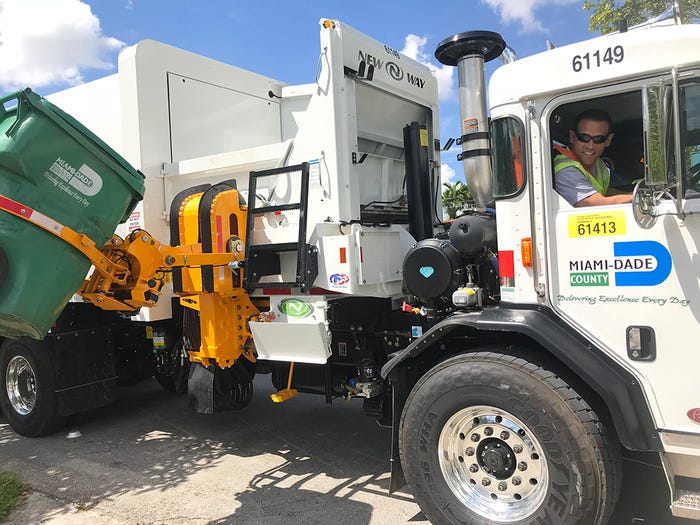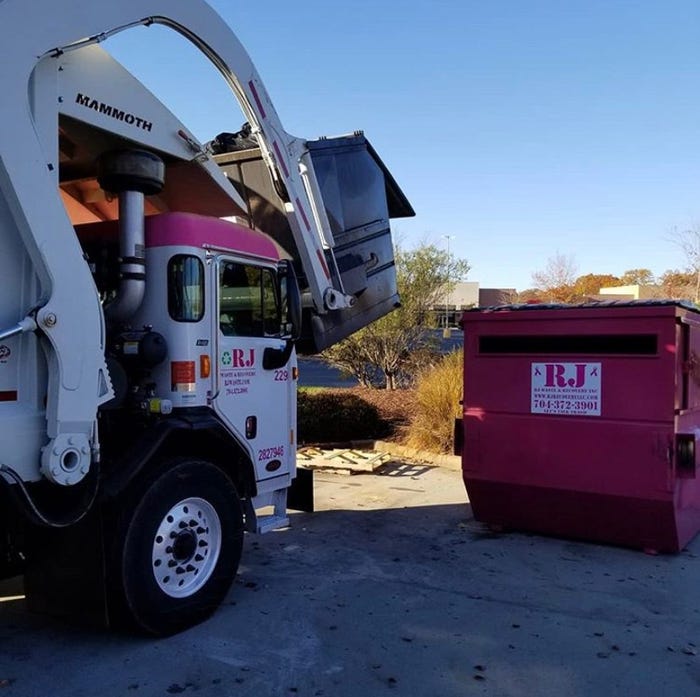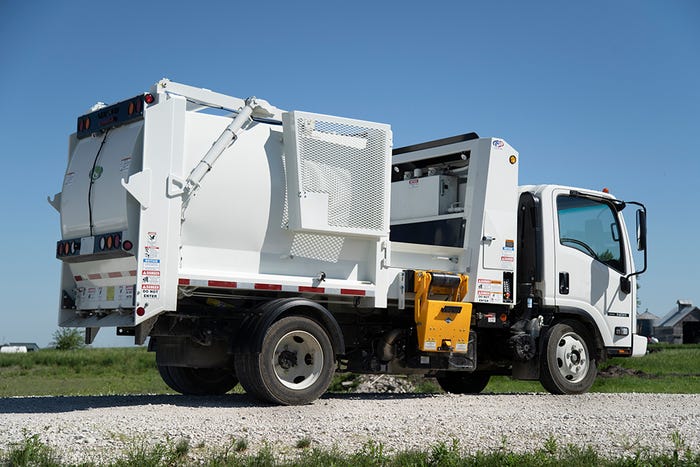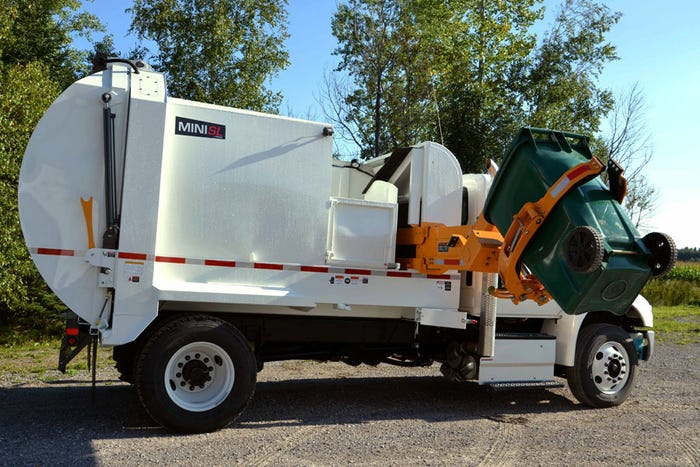New Way Trucks Continues to Innovate in Addressing the CDL Operator Shortage
According to research done by the American Trucking Associations, half of all CDL operators will likely retire in the next decade. As the solid waste industry faces stiff competition from other sectors that employ CDL operators, industry members are exploring creative ways to recruit and retain collection crews from all walks of life. Accordingly, industry-leading equipment manufacturers like New Way Trucks are proactively innovating to meet the shifting needs of municipalities and haulers across North America.
March 25, 2022

Sponsored by New Way
Don Ross
The State of Play
As we’ve learned throughout the past two years of unprecedented volatility, as well as the economic downturns that have preceded the recent pandemic, the solid waste industry – and collection operations in particular – are recession-resistant. Regardless of the current state of affairs, people will always consume goods and create waste. No matter what the world throws at us all, the men and women on the front lines of our industry unfailingly provide a vital health and human service. Organized waste collection began nearly 130 years ago to eliminate the spread of vectors and illness and continues to play a pivotal role in keeping us safe from infection and disease. There’s no doubt refuse collection is a risky job, but dedicating one’s life to this essential service is very rewarding compared to other careers requiring a commercial driver’s license (CDL).

The skyrocketing cost of higher education without a significant increase in outcomes has made earning college degrees challenging, or simply not worth it, for many. As Mike Rowe will tell you, "America is lending money it doesn't have to kids who can’t pay it back to train them for jobs that no longer exist. That’s nuts.” But the jobs that do exist, that we should be training for, are trade-focused, work ethic heavy, and skill dependent. Nothing describes the essential solid waste worker better.
I was recently discussing this topic with some very successful, industry veterans. One veteran shared that his mother had once said if he didn’t buckle down, he might become a garbage man. He joked, “look at me now, Mom!” As solid waste professionals, lets promote our industry with words that correctly describe it: essential, hard-working, secure, resilient, and well-paying.
The relatively low barrier of entry, ever-improving safety measures, personal, and financial benefits that solid waste collectors enjoy make it an attractive career to those who desire to make a great living without the prospect of back-breaking student debt.
An Alternative Route
By 2026, the solid waste collection industry will have 14,200 new jobs for collection drivers and riders, according to the National Waste & Recycling Association (NWRA). The NWRA is happy to remind us of what industry insiders have long known: working a collection route offers numerous advantages including, but not limited to: competitive compensation, comprehensive benefits packages, a five-day workweek, set daily work schedules, and being able to return home at the end of each day’s shift. The long-haul trucking industry cannot come close to this level of work-life balance.

Photo provided by RJ Waste & Recovery driver John Grosso (@grossojohn on instagram).
Given the highly competitive workforce arena, the challenge with getting people back to work post-pandemic, stringent safety and health policies, coupled with an aging workforce (three-quarters of refuse truck drivers are older than 40 according to Zippia research) and ongoing new job creation, the solid waste industry is facing a severe CDL operator shortage. How do we replace the front-line heroes and essential workers who have dedicated their careers to assuring our waste is collected and disposed of in a safe and efficient manner?
According to WM’s Four Corners Area (Arizona, Colorado, New Mexico, Utah) District Manager Justin Comfort, the industry should become more like the military. Though Justin is a soldier himself, he’s not talking about bootcamp or making MREs a staple of our diets, but rather getting in front of high schoolers the way military recruiters have done for generations. Educating rising high school juniors and seniors about the personal and professional benefits a driving career in the solid waste industry can provide is vitally important to replenishing the large amount of Baby Boomers who see retirement on the horizon.
Nowadays, there simply are not a lot of high-paying jobs that do not require a lot of experience, a college degree, or both. It is surprisingly common for college graduates to earn between $15-$20/hour at their first jobs out of school. The solid waste industry fast tracks its new entrants past many degree and/or certification requirements and offers more stable, lucrative careers at the onset.
Hiring for Attributes, Not A Specific Skillset
For Justin, he has found that the best way to hire for CDL positions is to, in fact, onboard employees without a CDL. Through outreach at local high schools and partnering with trades programs at community colleges in the Four Corners Area, his WM district has focused on hiring young people with attributes that lend to stability and longevity rather than focusing on hiring experienced CDL operators from other haulers or industries.

Okay, maybe not THIS young!
According to the Solid Waste Association of North America, over 50% of newly hired CDL drivers will leave their jobs within the first six months. The average cost of driver turnover is nearly $16,000 per driver and SWANA estimates the ballpark cost to onboard a new driver is between $6,800 and $14,000. It is no wonder that finding and keeping quality drivers has been an industry-wide challenge rife with bidding wars, high signing bonuses, and even chasing competitors’ trucks to poach employees!
It is much easier to bring in recently minted high schoolers and community college graduates that do not yet have CDLs and train them according to a hauler or municipality’s standards. Train these new hires on an under-CDL rear- or side-loader, where they can focus on safety, customer service, and a manageable route footprint in a smaller vehicle. Cover the costs of their CDL, and once an experienced driver retires the trainee is ready to graduate to operating a larger, yet still familiar collection vehicle. This not only breeds loyalty that results in longevity, but also keeps fleet managers from having to fight bad habits that experienced CDL operators may already have.
In Justin’s Four Corners district, it is no surprise that WM has had far better success implementing under-CDL hiring programs than municipalities and haulers have had sometimes literally chasing down already licensed CDL drivers.
Advancements in Under-CDL Rear- and Side-Load Equipment
For the last 20 years, the solid waste industry focused on improving productivity. That effort translated to bigger and fewer collection routes, larger trucks, and fleet-rightsizing. Given the current CDL driver shortage however, one shoe does not fit all markets, and hauling operators are now seeing those trends start to reverse themselves. There is a willingness to expand fleets with smaller collection vehicles with hopes of expanding the labor pool and drawing candidates from groups not traditionally targeted by the nation’s waste haulers and equipment manufacturers are poised and ready to meet that need.
An 11YD under-CDL New Way Viper
New Way’s under-CDL configurations of industry leading rear-end loaders (RELs) have been available for many years. The New Way Viper and Diamondback are more maneuverable than their larger counterparts, they also meet under-height restrictions that older municipalities must contend with. These are not only perfect vehicles for training non-CDL operators, but they are also ideal for small-volume residential routes, valet-type collection, high-density areas, resorts, and park routes. These small REL models are adaptable to residential cart-tippers, have a low load-sill threshold, operate quietly, and the Diamondback even comes available in high-compaction models!
An under-CDL New Way Diamondback
Under-CDL satellite side-loaders, like New Way’s Mamba, have also been available for years. With their slender body construction, these units fit places their larger, wider counterparts cannot and provide the freedom to load from either side. The Mamba also can transfer compacted waste into larger rear loaders. This truck features cart tipper and barrel dumper options, providing haulers the ability to customize their Mamba to meet their collection needs.

An under-CDL New Way Mamba
The industry’s continued shift to automation has further proven to extend an aging workforce while at the same time becoming gender-neutral. Historically solid waste has been male-dominated due to the heavy lifting requirements. However, technology has solved that problem. Automation does the heavy lifting, and equipment manufacturers are designing for a smaller stature person, creating access to more commercial drivers in a time when driver shortages are widespread.
The widespread, nation-sweeping conversion to automated collection throughout the early 2000’s has proven the safety and health benefits of automation waste collection. Industry statistical data has shown that automated waste collection significantly reduces injuries and preserves an aging workforce by eliminating heavy lifting while keeping operators in a climate-controlled cab away from traffic. If your collection contracts are not already automated, just do it. The human health and safety aspects are alone the best reason, not to mention the long-term operational savings, and waste diversion benefits of fixed volume collection.

In today’s climate, automated collection vehicles have another notable benefit: automation reduces contact with the waste stream to nearly zero. Couple that with a single vehicle operator as well as the speed at which automated side-loaders collect solid waste and you are helping to control the spread of disease and illness while providing the most visible municipal service there is.
As the manufacturer of the industry’s most popular automated side-loader (ASL), according to NWRA data, New Way Trucks is also going to reveal a mini ASL at this year’s Waste Expo, May 9-12 in Las Vegas. An under-CDL ASL that has the same attributes of its larger sibling could be the game-changing training ground at the right time for a new breed of CDL waste collectors.

What Lies Ahead

Though the statistics paint a less-than-rosy picture of the availability of CDL operators to the industry’s municipal and private haulers, there is nothing wrong with the solid waste industry that cannot be fixed with what is right with it. Industry thought-leader Michael Hoffman, Managing Director and Group Head of Diversified Industrials at Stifel Investment Services, echoed that while certain figures may leave readers with sticker shock, wage growth and the overall health –and resistance – of our industry are undeniable reasons for optimism.
Thoughtful messaging to high school and community college students about the prospect of recession-resistant careers that can span decades, widespread under-CDL training programs, an industry-wide commitment to make collection operations safter than ever before, and equipment manufacturers ready to innovate are the industry keys that can help fill the thousands of high-paying collection jobs available today and in the coming years.
Don Ross is Vice President of Sales and Marketing for New Way Trucks and KPAC Compactors and is a 35-year industry veteran. He dedicates his work to advancing the science of waste collection to increase efficiencies, improve safety, and enhance recycling and waste diversion using new technologies. He is the incoming chair of the National Waste & Recycling Association’s (NWRA) Board of Trustees and a member of NWRA’s Supplier Board of Governors. Don is a former Director of SWANA’s Collection and Transfer Technical Division and is a former SWANA International Board member.
You May Also Like


.png?width=300&auto=webp&quality=80&disable=upscale)